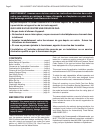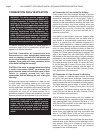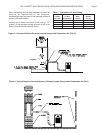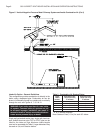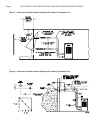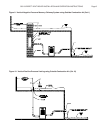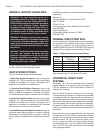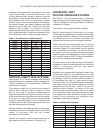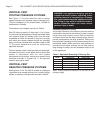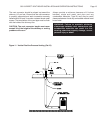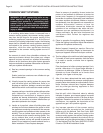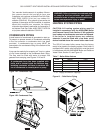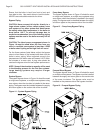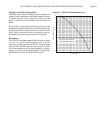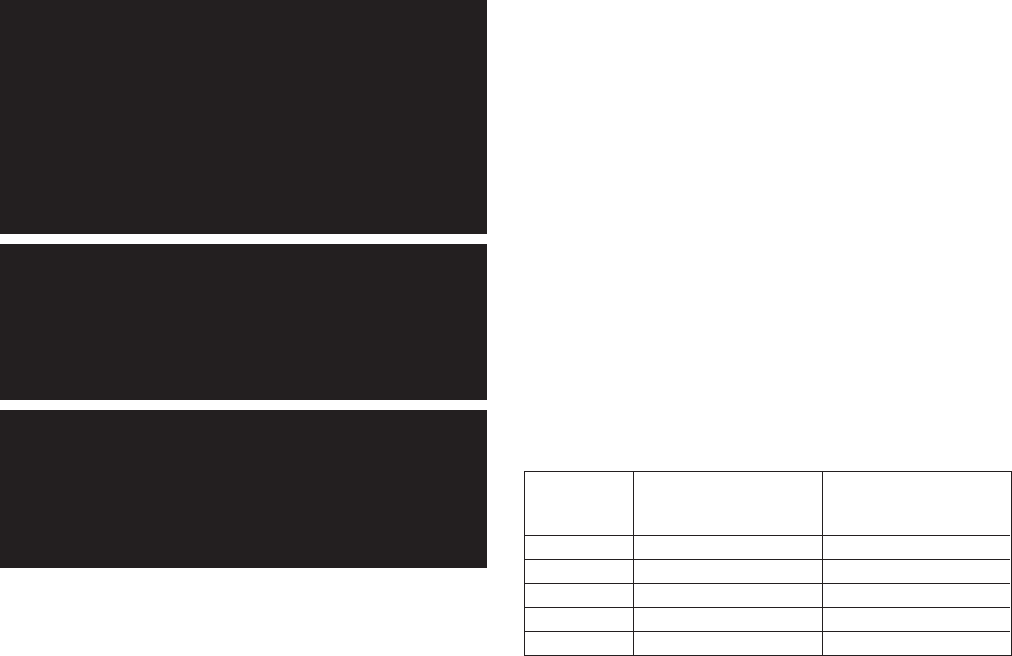
GS110 DIRECT VENT BOILER INSTALLATION AND OPERATION INSTRUCTIONSPage 10
Certified vent systems are manufactured by the following
companies:
Heat-fab, Inc.
130 Industrial Blvd., Turners Falls, MA 01376
(800) 772-0739.
Z-Flex U.S., Inc.
20 Commerce Park North, Bedford, NH 03110-6911
(800) 654-5600.
Protech Systems Inc.
26 Gansevoort Street, Albany, NY 12202
(518) 463-7284
GENERAL DIRECT VENT INFO
In this configuration the boiler blower is used to push the
flue products to the outdoors while drawing combustion
air from the outdoors. The instructions under the
COMBUSTION AIR & VENTILATION SECTION must be
followed! The vent system must be sized per Table 3.
Table 3 - Positive Pressure Vent System Sizing
* 4" to 3" reducer required
Note: Subtract 5 feet (1.5 m) for each 90° elbow.
HORIZONTAL DIRECT VENT
SYSTEMS
See figures 7 & 8. The vent materials used in horizontal
positive pressure vent systems must be certified to UL
1738 for installations in the United States, ULS636 for
installations in Canada.
Each 90° elbow is equal to 5 linear feet (1.5 m) of pipe.
To maximize the performance of single wall sheet metal
vent systems locate 90° elbows as far from the boiler as
possible and from one another. For best results, horizontal
vent systems should be as short and straight as possible.
The vent system must be both gas tight and watertight.
All seams and joints in metal pipes must be joined and
sealed in accordance with the vent system manufacturer’s
instructions.
When horizontal vent runs exceed 5 feet (1.5m) they must
be supported at 3 foot (0.98 m) intervals with overhead
hangers. The vent system must be pitched down, toward
the vent terminal, 1/4" per foot (21mm per meter). If any
part of a single wall metal vent system passes through
an unheated space it must be insulated with insulation
rated for 400°F. Structural penetrations must be made
using approved thimbles.
Equivalent Vent
Length (see note)
4” Diameter
Equivalent Vent
Length (see note)
3” Diameter
Boiler
Model
Number
*65 feet (19.8 m)
*65 feet (19.8 m)
*65 feet (19.8 m)
40 feet (12.2 m)
40 feet (12.2 m)
45 feet (13.7 m)
45 feet (13.7 m)
45 feet (13.7 m)
n/a
n/a
GS110-3
GS110-4
GS110-5
GS110-6
GS110-7
GENERAL VENTING GUIDELINES
WARNING: The vent installation must be in
accordance with Part 7, Venting of Equipment,
of the National Fuel Gas Code, ANSI Z223.1/
NFPA 54-latest revision or applicable provisions
of the local building codes. Canadian
installations must comply with CSA B149.1 or
.2 Installation Code. Improper venting can result
in excessive levels of carbon monoxide which
can result in severe personal injury or death!
WARNING: Thimbles and fire-stops must be
used where required. A minimum clearance of
6" must be maintained between single wall
metal vents and combustible construction or a
fire resulting in severe personal injury or death
may occur!
WARNING : Each boiler/water heater must have
it's own vent system. Common positive
pressure vent systems are not to be used!
Improper installation can result in excessive
levels of carbon monoxide which can cause
severe personal injury or death!
All vent systems must be fully supported by the building
structure and not by the boiler/water heater.
VENT SYSTEM OPTIONS
The GS110 may be vented the following ways:
1) Direct Vent (Positive Pressure), uses a vent system
certified to UL 1738 for installations in the United States,
ULS636 for installations in Canada. Combustion air is
piped from the outdoors to the blower inlet.
2) Horizontal Vent (Positive Pressure), uses a vent
system certified to UL 1738 for installations in the United
States, ULS636 for installations in Canada. Combustion
air is obtained from the space in which the unit is installed.
3) Vertical Vent (Positive Pressure), uses a vent system
certified to UL 1738 for installations in the United States,
ULS636 for installations in Canada. Combustion air is
piped from the outdoors to the blower inlet or is obtained
from the space in which the unit is installed.
4) Vertical/Chimney Vent (Negative Pressure), uses an
approved metal chimney system or masonry chimney.
Combustion air is obtained from the space in which the
unit is installed or is piped from the outdoors to the blower
inlet.



